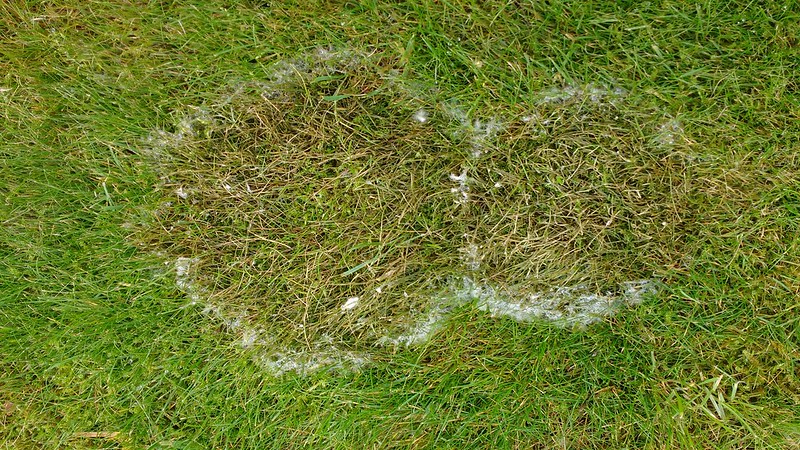
Photo by Kris Lord (Flickr)
If you're wondering how to identify Fusarium and what Fusarium looks like, then you're in the right place! In this blog, we'll take a look at the characteristics and features of Fusarium so you can spot it before it damages your lawn beyond repair.
What is Fusarium?
Fusarium is a type of fungi that is widely distributed amongst soil and plants. It is a naturally occurring type of turf fungus that can cause issues for gardeners and home-owners when it has the perfect conditions to thrive.
In optimal weather conditions, the spores of Fusarium fungi can cause a lawn to develop Fusarium patch disease. Autumn and winter are the best times for Fusarium fungi to develop into patch disease, especially when it is on the milder side.
The perfect weather conditions for Fusarium to grow is in:
How to Identify Fusarium
To identify Fusarium patch disease on your lawn, you must firstly look out for any patches of yellow/brown grass. It's best to check these patches in the morning, as areas affected by Fusarium will not hold any mist or dew.
Alongside patches of brown and yellow grass, you should expect top see a form of white mould. This can look like small bits of cotton-wool or cobwebs. This layer of white mould usually sits on top of the affected grass, and it can also be pink in colour, too!
If you're still struggling to identify whether your lawn is suffering with patch disease and you cannot see any visible white mould, you can conduct a test to identify Fusarium.
Simply cover a patch of the yellow/brown grass over night (with a container or plant pot, etc.) and take a look again in the morning. If white mould has developed over the patch in question, then this tells you that Fusarium patch disease is active within your lawn.
How Do I Treat Fusarium on My Lawn?
The best way to avoid Fusarium patch disease is to have a healthy lawn. Like with most fungi, if you have damp, enclosed conditions, it will be sure to thrive within your lawn.
To maintain your lawn and defend it against Fusarium, follow a lawn maintenance schedule to keep your lawn as healthy as possible including mowing, scarifying, feeding, weeding and aeration. Provide plenty of light, air, food and water, too, as these are essential for lawn growth.
Unfortunately, the weather is the main defence against Fusarium patch disease. And, as we all know, the UK weather can be extremely fickle! Colder temperatures, higher light levels and enhanced air movement will reduce the risk, but it is still worth following the above tips to defend your lawn against Fusarium.
For more information, take a look at our blog on How to Treat Fusarium Patch Disease.
Lawn Maintenance Services
Lawn & Weed Expert offer a variety of specialised lawn care services, including the treatment of lawn fungus infections like fusarium patch. If you’re currently struggling with fusarium in your lawn, we can help. Visit our website to learn more about our lawn fungus treatment services.
Lawn Fungus Treatments
If you’d like to talk with a member of our team or would like to arrange your FREE lawn survey, reach out and contact us today. One of our professional team members will be more than happy to answer any questions you may have.
Contact Us
Read More: Autumn Lawn Diseases